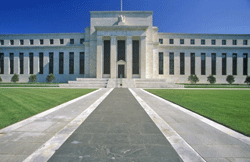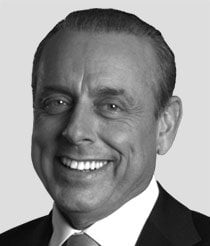The interesting news coming out of Federal Reserve Chairwoman Janet Yellen's Q&A Wednesday was her response to a question about bad bank "culture."
Apparently, it's not the Fed's concern.
Yellen said, "While changing the culture of organizations is not something that we can achieve through supervision, we will make sure that the banks that we supervise have appropriate compliance regimes in place."
So far, the Fed's "appropriate compliance regimes" let big banks get away with manipulating Libor, foreign exchange markets, metals markets, and energy prices.
And that's just a few of the big cheating regimes banks have lorded over.
Today I'll reveal a few more of those cheats - and I'll show you how the Fed, if it wanted to, could change bank culture with a single stroke of a pen...
Janet Yellen Doesn't Get How Easy It Would Be
Those "regimes" also created space for big banks to hide liabilities off their balance sheets. And they allowed banks to use derivatives and swaps to aid and abet Greece lying and cheating its way into the Economic and Monetary Union of the European Union (EMU) to exploit the Eurozone to leverage itself up to the point of insolvency.
 The Federal Reserve's supervision should demand that banks identify, specifically, who broke or breaks what laws or regulations. And there should be a minimum mandatory sentencing regime in place to guarantee that violators are jailed.
The Federal Reserve's supervision should demand that banks identify, specifically, who broke or breaks what laws or regulations. And there should be a minimum mandatory sentencing regime in place to guarantee that violators are jailed.
How hard is that?
The criminal culture that pervades banks - and this isn't an indictment of all bankers or the majority of bank employees - is mostly concentrated in the upper echelons of big banks where compensation is directly tied to revenue generation that sometimes spawns illegal profiteering schemes.
And guess what most of the charges are levied against...
The banks themselves, not the responsible individuals - and they're usually civil charges, not criminal charges.
That's a good place to start when setting up a new supervision regime. The Fed and other regulatory agencies should have the power to levy criminal charges in conjunction with U.S. Justice Department prosecutors.
How hard is that?
According to Gregory J. Millman from The Wall Street Journal's Risk & Compliance Journal on March 18, "the talk about culture is too vague and lacks specific, practical calls to action that might lead to a different and better way of doing business."
Millman's article cites a speech last October by William Dudley, the president of the Federal Reserve Bank of New York, who said, "How will a firm know if it is making real progress? Not having to plead guilty to felony charges or being assessed large fines is a good start. Firms should also pay closer attention to how they and the industry are broadly viewed by the public."
[epom key="ddec3ef33420ef7c9964a4695c349764" redirect="" sourceid="" imported="false"]
According to Millman's piece, "Another regulator who has spoken and written on the need for culture change, Comptroller of the Currency Thomas J. Curry, remarked, 'I've had some bank executives and directors say "I'm not a damn sociologist," and I say we don't expect you to be. We are really looking at this from a risk management standpoint. We're really talking about accountability and how the CEO and management drive that home.'"
The good news for bank executives is they don't need to be sociologists or culture club do-gooders if they don't want to be.
All these bankers have to do is be willing to go to jail; if they have no direct responsibility or knowledge of lawbreaking, conning, or scheming going on under them, they should give up suspected perps and be willing to have their own compensation clawed back if they benefited from their underlings' crimes.
How hard is that?
Huff and Puff and Blow Your Savings Down: Central bankers aren't shepherds. The truth is they're more like wolves... in sheep's clothing. We're going to show you what their game really is and how it works. Then we're going to show you how to win it...
About the Author
Shah Gilani boasts a financial pedigree unlike any other. He ran his first hedge fund in 1982 from his seat on the floor of the Chicago Board of Options Exchange. When options on the Standard & Poor's 100 began trading on March 11, 1983, Shah worked in "the pit" as a market maker.
The work he did laid the foundation for what would later become the VIX - to this day one of the most widely used indicators worldwide. After leaving Chicago to run the futures and options division of the British banking giant Lloyd's TSB, Shah moved up to Roosevelt & Cross Inc., an old-line New York boutique firm. There he originated and ran a packaged fixed-income trading desk, and established that company's "listed" and OTC trading desks.
Shah founded a second hedge fund in 1999, which he ran until 2003.
Shah's vast network of contacts includes the biggest players on Wall Street and in international finance. These contacts give him the real story - when others only get what the investment banks want them to see.
Today, as editor of Hyperdrive Portfolio, Shah presents his legion of subscribers with massive profit opportunities that result from paradigm shifts in the way we work, play, and live.
Shah is a frequent guest on CNBC, Forbes, and MarketWatch, and you can catch him every week on Fox Business's Varney & Co.



